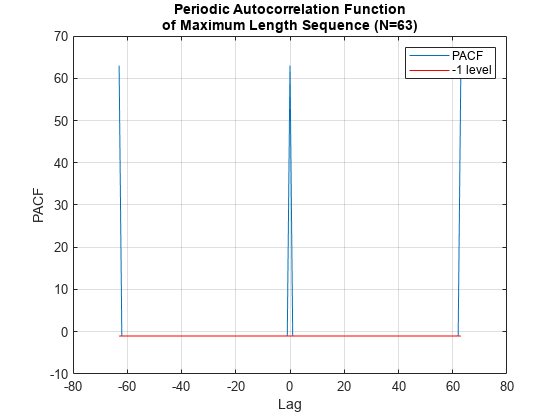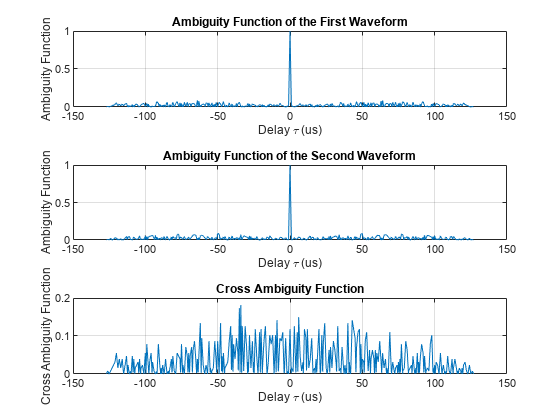mlseq
Description
S = mlseq(N,k)k in a Galois field
GF(2n) to use. For each allowable sequence
length N, the total number T of primitive polynomials
in GF(2n) is given in the table Polynomial indices.
Examples
Input Arguments
Output Arguments
Algorithms
An MLS can be generated using a linear-feedback shift register. The taps of the register are set according to the non-zero coefficients of a primitive polynomial over Galois field GF(2n). A primitive polynomial in GF(2n) has a form
where ci is a length-n vector of coefficients. The entries of ci can either be 0 or 1 and can be interpreted as an integer in a binary form (MSB corresponds to the power of n-1). An MLS can then be generated using the recursion relation:
The first n elements of the sequence
can be supplied as an initial condition in order to initiate the recursion. Choosing different initial conditions will result in different final sequences that are cyclic shifts of each other. There are total N=2n-1 possible initial conditions. The initial conditions can be represented as binary integers from 1 to N with the LSB corresponding to s1. The final step in generating the sequence to replacing the "0" entries with "-1". For a given n there can be multiple primitive polynomials in GF(2n) resulting in different sequences. By default, the function returns a sequence having the lowest autocorrelation sidelobes.
References
[1] Levanon, N. and E. Mozeson. Radar Signals. Hoboken, NJ: John Wiley & Sons, 2004.
[2] Haderer, Heinz, Reinhard Feger, and Andreas Stelzer. "A comparison of phase-coded CW radar modulation schemes for integrated radar sensors" in 2014 44th European Microwave Conference, pp. 1896-1899. IEEE, 2014.
Extended Capabilities
Version History
Introduced in R2024a

